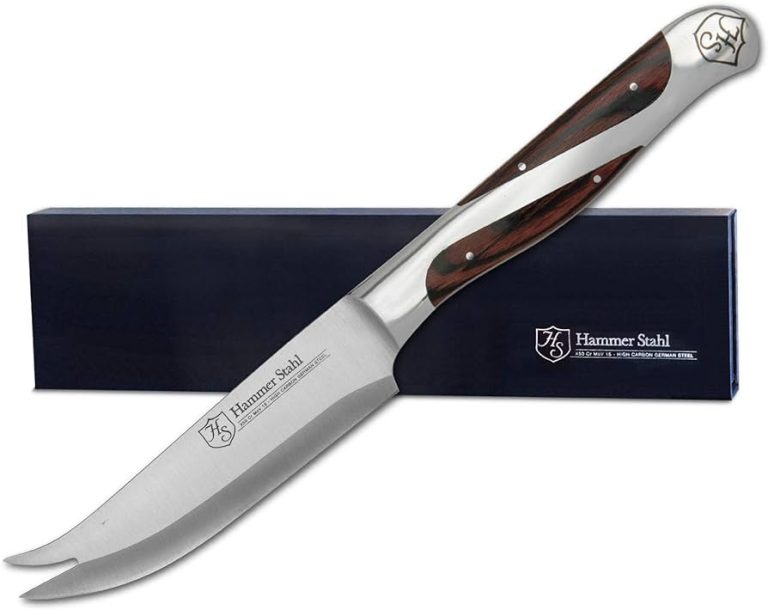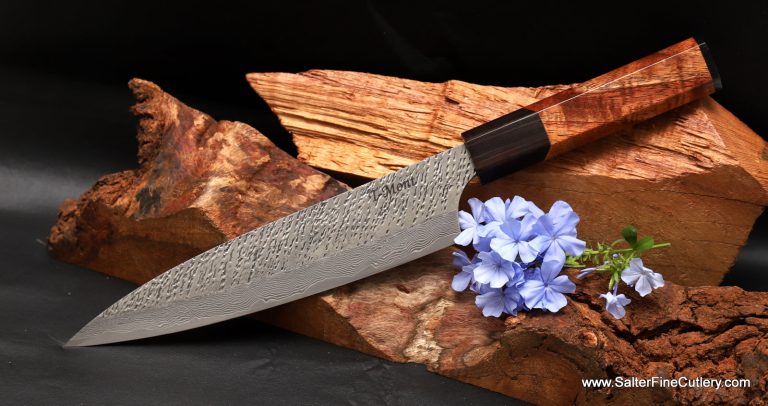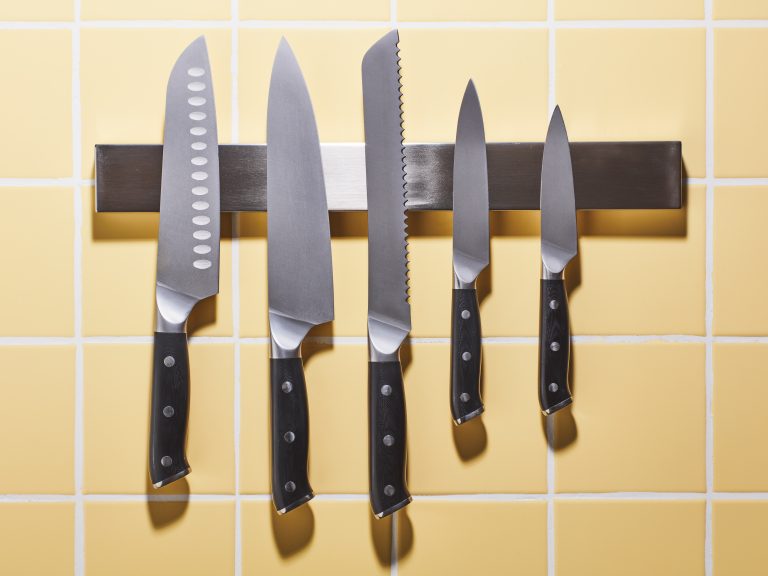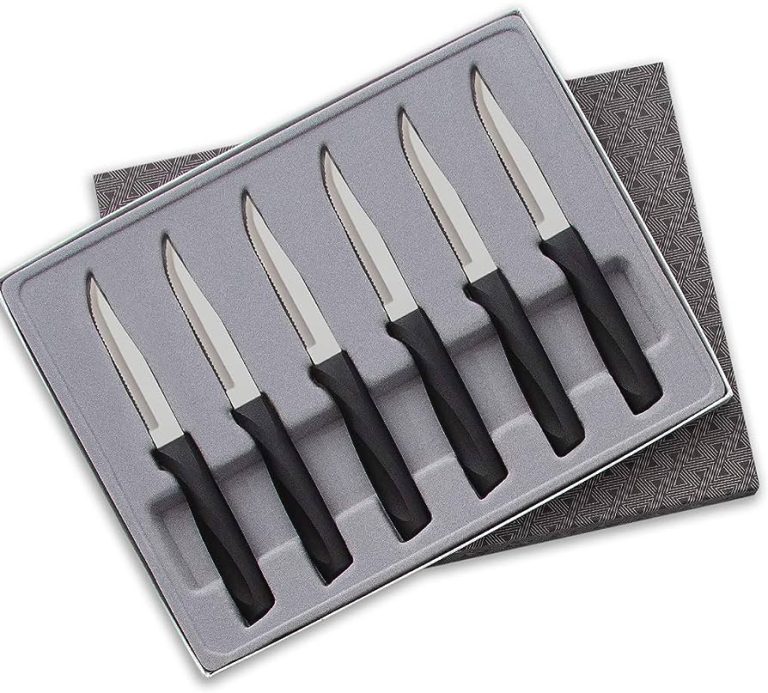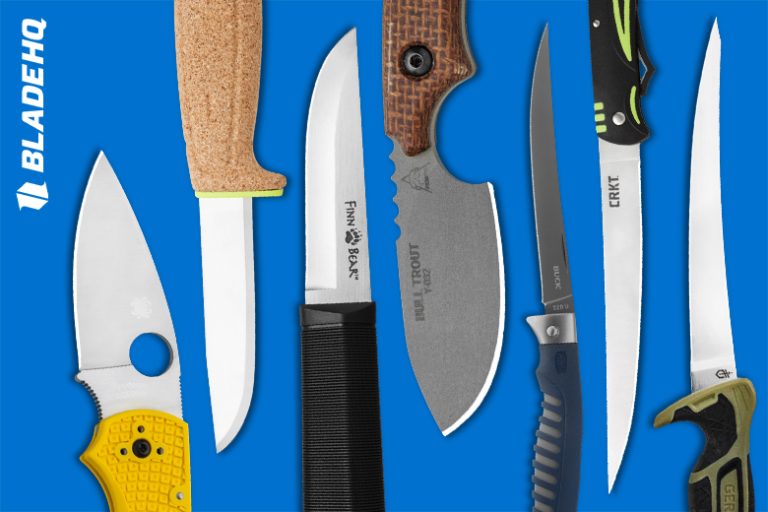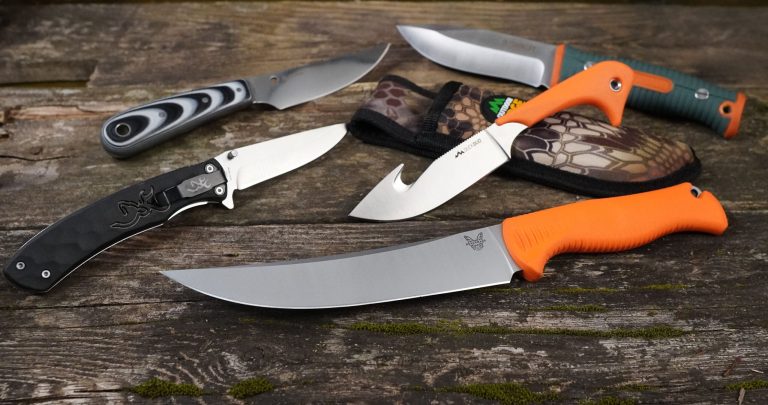The Art of Knife Filleting
The art of knife filleting involves precise cuts and skillful techniques to remove bones and skin from meat or fish. It requires careful handling and precision to achieve clean and efficient results.
Knife filleting is an intricate culinary skill that showcases the delicacy and finesse required to remove bones and skin from meat or fish. This art form demands both precision and thoughtful technique, as even the slightest error can affect the quality of the final product.
A skilled knife filletier must possess remarkable dexterity and knowledge of knife angles, ensuring clean cuts and efficient bone removal. As a result, the filleted meat or fish is not only visually appealing but also convenient for consumption, doing justice to the culinary masterpiece. Whether for professional chefs or home cooks, the art of knife filleting elevates dishes to new heights and showcases the mastery of the craft.

Credit: www.amazon.com
Factors To Consider
Factors to consider when choosing a knife for filleting include blade length, blade material, handle comfort, and flexibility of the blade.
Blade length is an important factor to consider as it determines the efficiency and precision of the filleting process. A longer blade allows for longer and cleaner cuts, while a shorter blade is more maneuverable for delicate tasks.
The material of the blade is another crucial consideration. Stainless steel blades are popular for their durability and resistance to corrosion, while high carbon steel blades offer excellent sharpness and edge retention.
The handle comfort is essential for extended periods of use. Look for knives with ergonomic handles that provide a secure grip and minimize hand fatigue.
Flexibility of the blade is crucial for filleting tasks, as it allows for precise control and maneuverability. A flexible blade can easily navigate around bones and contours of the fish, ensuring clean cuts and minimal waste.
Essential Tools And Equipment
A well-equipped kitchen is essential for knife filleting. Here are some indispensable tools and equipment:
- Cutting board: A sturdy cutting board provides a stable surface for precise and safe knife work. Look for one made of durable materials like wood or plastic.
- Safety gloves: Protect your hands from accidental cuts by using safety gloves. They offer an extra layer of defense while handling sharp knives.
- Kitchen towels: Keep a few kitchen towels nearby to wipe off excess moisture and maintain a clean work area.
- Sharpening stone: Maintaining sharp blades is crucial for effective filleting. A sharpening stone ensures your knives remain razor-sharp, improving both safety and precision in the process.
Investing in the right tools and equipment enhances your efficiency and ensures a smooth knife filleting experience.
Filleting Fish
The art of knife filleting is a crucial skill for anyone who enjoys cooking and eating fish. When it comes to filleting fish, there are several key steps to follow in order to achieve a clean and professional result.
Firstly, removing the scales is an important initial step. Using a fish scaler or the back of a knife, scrape the scales off the fish from tail to head until the skin is completely clean.
Gutting the fish comes next. Make a small incision at the belly and carefully remove the entrails, taking care not to puncture any organs or the bile sac.
Once the fish is gutted, it’s time to create a fillet. Starting from the tail, slide the knife between the flesh and the bones, angling the blade slightly towards the backbone. Continue this motion, following the natural contours of the fish’s body, until a fillet is completely separated.
Finally, removing the bones is the last step. Using a pair of fish tweezers or pliers, gently pull out the remaining pin bones that may be present in the fillet.
By following these steps, you’ll be able to master the art of knife filleting and create beautifully filleted fish that is ready for cooking or serving.
Filleting Poultry
The art of knife filleting is an essential skill for any cook or chef. When it comes to filleting poultry, there are several steps to follow to ensure a clean and precise cut. Firstly, removing the skin is important to expose the meat and make it easier to separate the different parts of the bird. Carefully peel back the skin using a sharp knife, taking care not to tear it. Secondly, separating the poultry into parts requires precision and skill. Identify the joints and use the knife to carefully cut through them, separating the legs, wings, and breast. Lastly, removing the bones is essential for certain dishes. Carefully run your knife along the bones, separating the meat from them. This will provide boneless pieces of poultry that are ready for cooking. Mastering the art of knife filleting will elevate your culinary skills and allow you to create delicious and visually appealing dishes.
Filleting Meat
The art of knife filleting is an essential skill for any aspiring chef or home cook looking to prepare meat dishes with precision. One key aspect of filleting meat is trimming excess fat, which helps improve the taste and presentation of the final dish. By carefully removing the fatty parts, you can enhance the flavors and texture of the meat. Another important step in filleting is slicing the meat into desired cuts. This requires accuracy and a sharp knife to achieve perfect slices for dishes like steaks or stir-fries. Lastly, removing bones is crucial for certain cuts of meat, such as fish or poultry. Skillfully deboning meat not only makes the dish more visually appealing but also makes it easier to eat and cook evenly. Mastering the art of knife filleting allows you to create delicious and visually appealing meat dishes that will impress your guests!
Safety Precautions
The Art of Knife Filleting involves some essential safety precautions to ensure both efficiency and protection while filleting. When working with sharp knives, it is crucial to keep your fingers away from the blade to avoid potential injuries. To stabilize the knife, firmly grip the handle with your dominant hand and rest the index finger on the spine of the blade. This provides better control and reduces the risk of accidents. Using proper grip techniques is also essential, such as the pinch grip or the handle grip, depending on personal preference and the type of filleting task at hand.
Cleaning The Knife
The art of knife filleting requires attention to detail and proper knife care. One essential aspect of knife maintenance is cleaning. Hand washing the knife is crucial to remove any food particles or residue that may be stuck to the blade.
To thoroughly clean the knife, start by using warm soapy water and a non-abrasive sponge. Gently scrub the blade, taking care to reach all the nooks and crevices. Rinse the knife under running water to remove any soap residue.
After washing, it’s important to dry the knife thoroughly. Wipe the blade and handle with a clean, dry towel to prevent moisture buildup, which can lead to rusting. Pay extra attention to drying the areas where the blade meets the handle, as water can accumulate there.
By following these steps, you’ll keep your knife clean and ready for the next filleting task. Remember, proper knife maintenance is vital for both performance and longevity.
Sharpening Techniques
Knife sharpening is a crucial skill for the art of knife filleting. The first technique involves using a sharpening stone. This coarse stone helps shape the blade’s edge by removing any dullness or imperfections. The knife should be held at a constant angle and moved across the stone, starting from the base to the tip, with consistent pressure for an optimal edge.
Once the edge is shaped, honing the blade is the next step. A steel honing rod is ideal for this purpose. By using gentle, sweeping motions, the blade is realigned and fine-tuned. Regular honing maintains the sharpness and prolongs the life of the knife.
After sharpening and honing, it’s essential to test the blade’s sharpness. A simple paper test can be done by sliding the knife through a piece of paper effortlessly. If it cuts smoothly without tearing the paper, the blade is sufficiently sharp for precise filleting.
Storing Your Knife
The proper storage of your knife is essential for maintaining its quality and safety. Here are a few effective methods to ensure your knife stays in optimal condition:
- Knife Block or Drawer: Consider using a knife block or drawer insert to keep your knives organized and protected from damage. Make sure the knives are placed in slots or compartments to prevent them from rubbing against each other.
- Magnetic Strips: Another option is to install a magnetic strip on your wall or inside a cabinet. This allows you to easily display and access your knives while keeping them securely in place.
- Blade Guards: Invest in blade guards to protect the sharp edge of your knife. These sheaths or covers provide an additional layer of safety and prevent accidental nicks or cuts.
- Knife Rolls or Cases: If you need to transport your knives or keep them safe while on the move, consider using knife rolls or cases. These provide padded compartments to keep each knife securely in place.
- Proper Cleaning: Before storing your knife, ensure it is clean and dry to prevent the risk of rust or corrosion. Regularly oil the blade to maintain its quality.
- Avoid Contact with Other Utensils: When storing your knife, keep it separate from other utensils to prevent any accidental damage to the blade.
By following these proper storage methods, you can ensure your knife remains sharp, safe, and in excellent condition for years to come.
Knife Maintenance
An important aspect of knife filleting that is often overlooked is regular knife maintenance. To ensure that your knife retains its sharpness and cutting efficiency, it is crucial to sharpen it on a regular basis. **Regular sharpening** not only keeps the blade sharp but also prevents it from becoming dull, which can lead to accidents and injuries.
In addition to sharpening, another important aspect of knife maintenance is **oil lubrication**. Applying a small amount of oil to the blade helps reduce friction and prolongs the life of the knife. It also helps prevent rust and corrosion, especially if you frequently use your knife in wet or humid conditions.
Maintaining and taking care of your knives is an essential part of knife filleting. Regular sharpening and oil lubrication ensure that your knives perform at their best and last longer, saving you time and money in the long run.
Adapting To Different Cutting Surfaces
In the art of knife filleting, adapting to different cutting surfaces is crucial for achieving precise and effortless cuts. One aspect to consider is adjusting your technique for different types of cutting boards. Each cutting board material, such as wood, plastic, or bamboo, requires a slightly different approach to maximize efficiency and prevent damage to both the knife and the board.
For wooden cutting boards, **ensure** that the surface is smooth and free of any cracks or deep grooves. Opt for long and fluid cutting motions, making sure to apply even pressure throughout the cut. This helps to avoid knife snagging and splintering the board.
When using plastic cutting boards, go for light and quick slicing motions. Plastic boards may be slightly harder on the knife compared to other materials, so it is important to maintain a sharp blade to minimize resistance.
Lastly, when working with bamboo cutting boards, utilize a gentle sawing motion to maintain its integrity. Bamboo boards are more susceptible to scratches, so using a sawing motion helps prevent deep cuts that could harbor bacteria.
By adapting your technique to different types of cutting boards, you can ensure a seamless and enjoyable knife filleting experience.
Grilled Salmon With Lemon Butter
The process of knife filleting is an art that requires precision and skill. When it comes to filleting a salmon, it’s important to follow the right technique to achieve the best results.
The first step in filleting a salmon is to ensure that you have a sharp knife. You’ll want to start by making a clean cut along the belly of the fish, from the head to the tail. Then, slide the blade along the backbone, separating the flesh from the bone in one smooth motion.
Once you’ve filleted the salmon, it’s time to grill it to perfection. Preheat your grill to medium-high heat and lightly oil the grates to prevent sticking. Place the fillets on the grill, skin side down, and cook for about 4-6 minutes per side, or until the flesh flakes easily with a fork.
To complement the grilled salmon, you can make a tasty lemon butter sauce. Simply melt some butter in a saucepan and squeeze in the juice of a lemon. Stir in some fresh herbs like dill or parsley, and season with salt and pepper to taste. Drizzle the sauce over the grilled salmon just before serving.
| Filleting the Salmon | Grilling Instructions | Lemon Butter Sauce Recipe |
|---|---|---|
| Ensure a sharp knife | Preheat grill to medium-high heat | Melt butter in a saucepan |
| Cut along the belly of the fish | Lightly oil the grates | Squeeze in the juice of a lemon |
| Slide the blade along the backbone | Place fillets on the grill, skin side down | Stir in fresh herbs like dill or parsley |
| Separate flesh from the bone | Cook for about 4-6 minutes per side | Season with salt and pepper |
Chicken Stir-Fry With Vegetables
Fillet chicken breast:
To start, place the chicken breast on a clean, flat cutting surface. Using a sharp knife, carefully remove the bone by cutting along the bone line. Make a small diagonal cut near the wing joint and gently pull the bone away from the breast. Trim any excess fat or skin. Once the breast is boneless and clean, slice it horizontally, creating two thinner fillets. This will allow for even cooking in the stir-fry.
Vegetable preparation:
Select an assortment of colorful vegetables such as bell peppers, broccoli, carrots, and snap peas. Wash and chop them into bite-sized pieces for easy stir-frying.
Stir-fry cooking instructions:
Heat a tablespoon of oil in a wok or large skillet over medium-high heat. Add the chicken fillets and cook until browned and cooked through, about 3-4 minutes per side. Remove the chicken from the pan and set aside. In the same pan, add a bit more oil if needed and stir-fry the vegetables until crisp-tender, about 2-3 minutes. Return the chicken to the pan, along with any desired sauces or seasonings, and toss to combine. Cook for an additional minute or until everything is heated through. Serve the chicken stir-fry with vegetables hot and enjoy!
Beef Tenderloin With Herb Butter
| Beef Tenderloin with Herb Butter |
When filleting a beef tenderloin, it is important to start with trimming the fat from the meat. Remove any excess fat, as it can affect the taste and texture of the final dish. To prepare the herb butter, combine softened butter with finely chopped herbs such as parsley, thyme, and rosemary. Season with salt and pepper to taste. Mix well and set aside. Cooking instructions are as follows:
|
Conclusion
Mastering the art of knife filleting requires practice, patience, and precision. By following the proper techniques, you can transform the task of filleting into an art form. The right equipment, like a sharp and flexible fillet knife, along with a steady hand, is crucial for achieving clean and precise cuts.
Understanding the anatomy of the fish and the different fillet types will help you choose the correct approach for each situation. Furthermore, taking care of your knife, practicing proper hygiene, and ensuring your workspace is clean and organized are essential for successful filleting.
Always strive to improve your skills through practice and learning from experienced filleters. By mastering the art of knife filleting, you’ll be able to create beautifully filleted fish that are perfect for cooking and presentation. So, go ahead and put your skills to the test, and see how this art form can elevate your culinary experiences.

